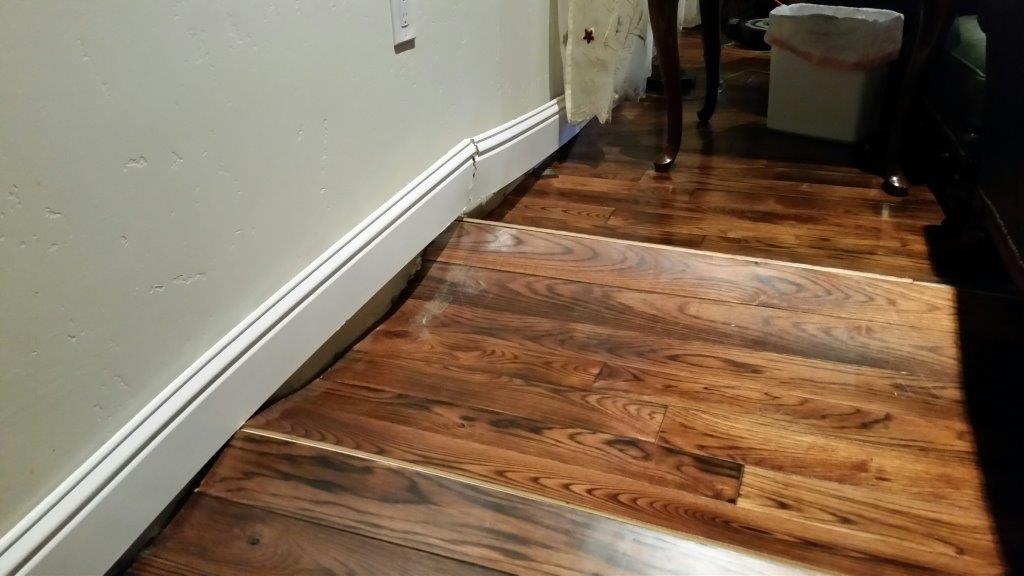Do's and also Don'ts Throughout Water Damage Emergencies.
Do's and also Don'ts Throughout Water Damage Emergencies.
Blog Article
Are you on the lookout for details about Keeping Your Home Safe This Holiday Season?

Water offers life, water invasion on components where it's not expected to be can result in damages. If the water soaks into your framework, it can peel off away surfaces and erode the structure. Mold and also mold likewise grow in a damp setting, which can be dangerous for your wellness. Residences with water damages scent old and moldy.
Water can originate from lots of sources such as tropical storms, floodings, ruptured pipes, leaks, as well as drain issues. In case you experience water damage, it would certainly be great to know some safety preventative measures. Here are a few guidelines on just how to handle water damages.
Do Prioritize Residence Insurance Coverage Coverage
Water damages from flood as a result of hefty winds is seasonal. You can also experience an unexpected flood when a malfunctioning pipe suddenly ruptures into your house. It would be best to have house insurance that covers both disasters such as natural disasters, as well as emergency situations like broken plumbing.
Don't Forget to Switch Off Utilities
In case of a disaster, particularly if you live in a flood-prone area, it would be recommended to turn off the major electrical circuit. This removes power to your whole house, avoiding electrical shocks when water is available in as it is a conductor. Do not neglect to transform off the main water line valve. Furnishings will move about and also create damages when floodwaters are high. Having the primary shutoff turned off stops more damages.
Do Remain Proactive as well as Heed Climate Alerts
Listen to discharge warnings if you live near a river, creek, or lake . Doing so reduces potential home damages.
Do Not Disregard the Roof
Before the weather condition transforms terrible, see to it you have a roof covering inspection. It would certainly be sensible to get this service every year as it can mitigate complicated problems. You can stay clear of rainfall damages if there are no openings and leaks in your roofing system. Your contractor will certainly additionally take care of defective seamless gutters or any other signs of weakening. This will stop water from moving down your walls and also saturating your ceiling.
Do Pay Attention to Little Leakages
A burst pipeline doesn't happen over night. Generally, there are warnings that suggest you have damaged pipelines in your home. For example, you may observe gurgling paint, peeling off wallpaper, water streaks, water stains, or leaking noises behind the wall surfaces. Ultimately, this pipeline will certainly rupture. Ideally, you should not wait for points to rise. Have your plumbing repaired before it results in substantial damages.
Don't Panic in Case of a Burst Pipe
When it comes to water damage, timing is essential. Therefore, if a pipeline ruptureds in your home, right away shut off your primary water valve to cut off the source. Call a respectable water damages reconstruction professional for help.
Water offers life, water invasion on parts where it's not meant to be can result in damages. Homes with water damages scent old as well as mildewy.
Water damages from flood fees to heavy winds is seasonal. You might see bubbling paint, peeling off wallpaper, water touches, water spots, or dripping sounds behind the wall surfaces. When it comes to water damage, timing is essential.
Some Do's & Don't When Dealing with a Water Damage
DO:
Make sure the water source has been eliminated. Contact a plumber if needed. Turn off circuit breakers supplying electricity to wet areas and unplug any electronics that are on wet carpet or surfaces Remove small furniture items Remove as much excess water as possible by mopping or blotting; Use WHITE towels to blot wet carpeting Wipe water from wooden furniture after removing anything on it Remove and prop up wet upholstery cushions for even drying (check for any bleeding) Pin up curtains or furniture skirts if needed Place aluminum foil, saucers or wood blocks between furniture legs and wet carpet Turn on air conditioning for maximum drying in winter and open windows in the summer Open any drawers and cabinets affected for complete drying but do not force them open Remove any valuable art objects or paintings to a safe, dry place Open any suitcases or luggage that may have been affected to dry, preferably in sunlight Hang any fur or leather goods to dry at room temperature Punch small holes in sagging ceilings to relieve trapped water (don't forget to place pans beneath!); however, if the ceiling is sagging extremely low, stay out of the room and we'll take care of it DO NOT:
Leave wet fabrics in place; dry them as soon as possible Leave books, magazines or any other colored items on wet carpets or floor Use your household vacuum to remove water Use TV's or other electronics/appliances while standing on wet carpets or floors; especially not on wet concrete floors Turn on ceiling fixtures if the ceiling is wet Turn your heat up, unless instructed otherwise

I was brought to that article about Ways to Reduce The Risk Of Fire And Water Damage through a friend on our other web page. Sharing is nice. Who knows, you will be doing someone a favor. We take joy in reading our article about Preventing Fires and Water Damage In Your Home.
Report this page